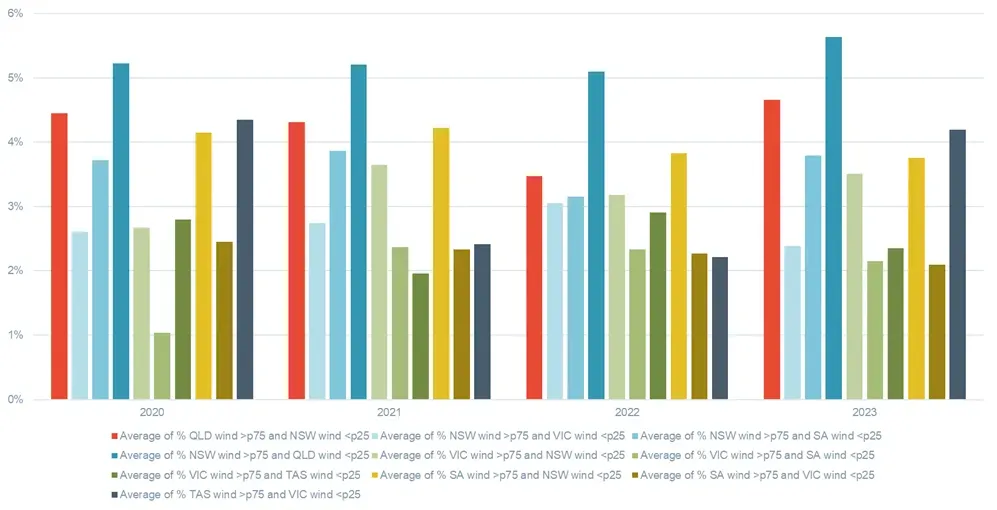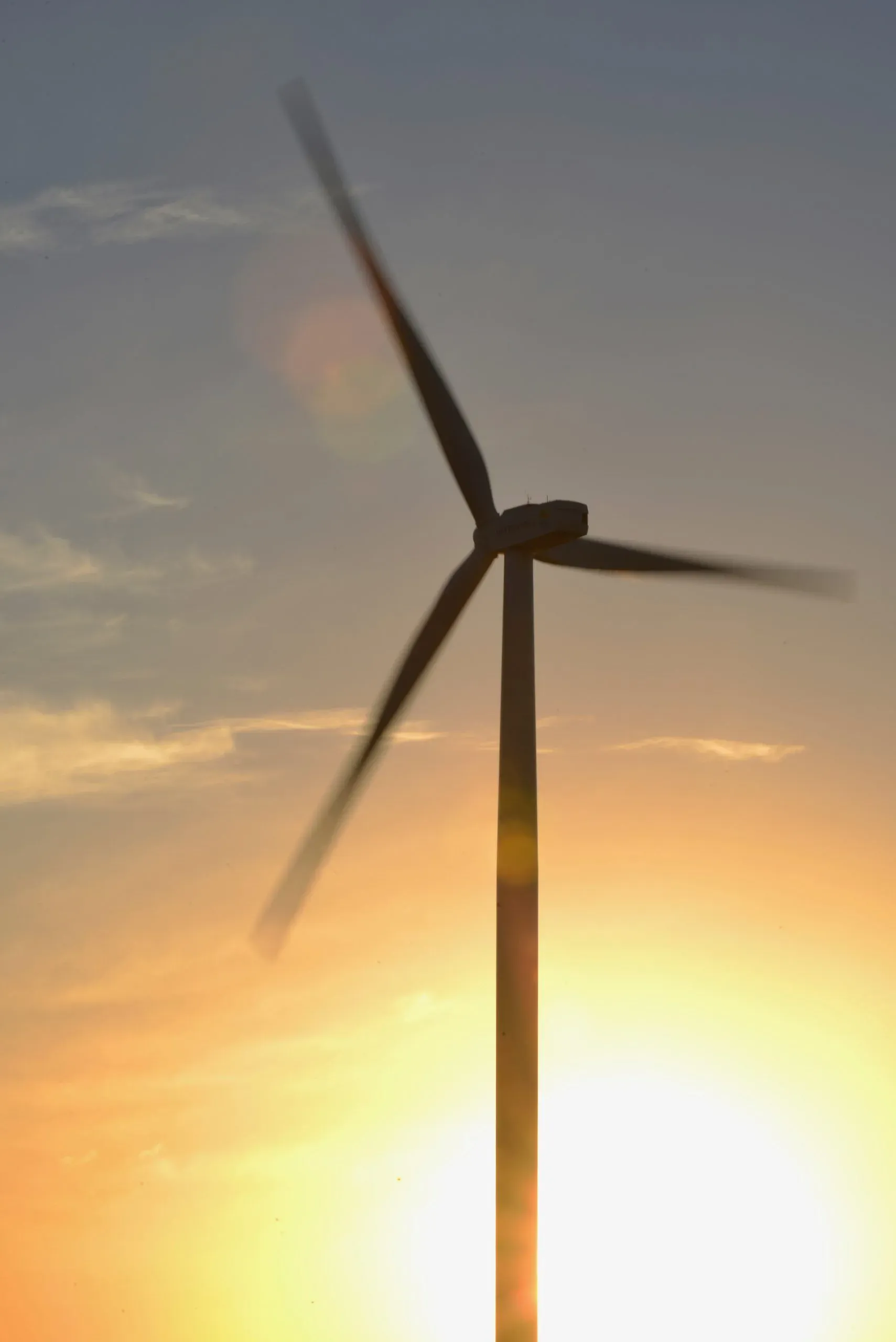Penetration of renewables continues to dominate the energy news, as we saw renewables as a proportion of total demand reach new heights this week to a new record of ~70% penetration. In light of this continuing march toward a renewable-dominated grid (building on some analysis we did in Chart of the week #186 on differences in wind generation and what appeared to be somewhat correlated wind generation profiles between VIC, SA and NSW), we wanted to review the extent to which there was the ability for wind generation to be shared across interconnected regions.
So, how much support can each of the states provide each other in a grid that will be dominated by wind and renewables? To try and better understand this dynamic, we ascertained the 25th percentile (P25) and 75th percentile (P75) for wind generation dispatch periods by state by the time of day for each month. We looked at the number of instances where a P75 wind generation period and P25 wind generation period occurred in interconnected states at the same time as a proxy measure for determining whether one state might have excess generation to be able to support interconnected regions. We did this across historic 5-minute dispatch periods from January 2020 to June 2023.
The region best placed to support other regions is NSW. NSW ranked highest with over 5% of dispatch periods, where it would be in a position to support export to QLD. Interestingly, QLD was also well placed to support NSW in just over 4% of periods, which makes a strong case for interconnection between these two regions. Perhaps surprisingly – based on some of the data extracted from a previous chart of the week that showed similar wind profiles – SA was well placed to provide support to NSW in ~4% of periods, while NSW support to SA was slightly lower at ~3.5% of periods. The trend between regions generally held across the 3.5 years of data (most moved by ~1% year on year).
Figure 1: Percentage of periods where wind generation is greater than P75 and lower than P25 across interconnected regions

Source: Data from NEMWEB, Cornwall Insight
It’s all well and good to be able to provide support, but is this support available when it is likely to be needed most, over the evening peak?
NSW to QLD still has the most periods to be able to provide support, averaging just under ~5% over the 4-8pm period. Interestingly, the periods when NSW can provide the highest levels of support to QLD are during the middle of the day (just under 6%) when QLD is unlikely to need it. SA to NSW averages around 4% of periods over the same evening peak period 4-8pm, as does QLD to NSW.
The region with the lowest support instances is VIC to SA, with less than 1% over the 4-6pm period before climbing to ~2% by 8pm. This could suggest that the two regions are well correlated with wind generation and are unlikely to have instances of low wind generation when the other has high wind generation. However, we find that support from SA to VIC over that same evening peak period is around double across the 4-6pm period at ~1.8% of periods before VIC to SA support increases to reach similar levels by 8pm.
On a seasonal basis, there is the lowest ability to share wind between regions over the winter months. Victoria would likely be looking for support over this period as wind falls away and solar generation is at its lowest; there is only ~2% each from SA, NSW, and Tasmania over the May-August period. Over this same period, however, SA and QLD support to NSW each average around the 3% mark each. With this context, it makes sense that VIC would be looking to diversify some of its wind resources from the west of the state through offshore wind development.
There are a number of different ways to undertake this analysis to determine what support might be provided across regions in the NEM. On the current analysis, the ability to provide regional support by moving wind generation between states ranges from 1%-6% of total periods which is 5%-24% of those periods where wind is above P75. This is not a large number of periods to be building interconnection for if one of the main reasons for interconnection is to be able to share resources. However, the magnitude of wind available in those periods and demand during those periods in those states would need to be analysed further to make a determination as to the size and nature of the interconnection required.
For more information on our recently released Benchmark power curve and Probabilistic volatility curve (which deals with high-impact low-probability events in the NEM), please contact enquiries@cornwall-insight.com.au.








